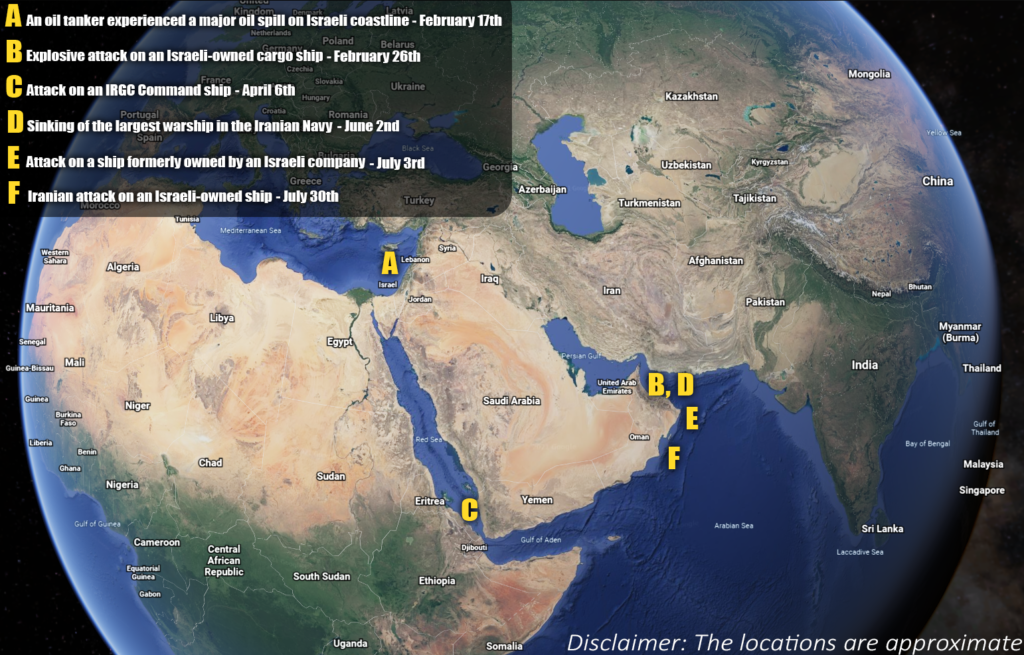By: Yaakov Lappin
As Iran’s confidence rises, its hostile activity at sea, and use of shipping to smuggle weapons and oil, have also risen as well in recent weeks.
Currently, and most disturbingly, this trend has found expression in a bid by the Iranian-backed Hezbollah to import Iranian oil into Lebanon and to take advantage of Lebanon’s unending economic and political crises to fill the vacuum by boosting the dominance of the Iranian axis.
On August 22, Hezbollah chief Hassan Nasrallah stated that an oil tanker that set sail from Iran to Lebanon is due to arrive in the coming days.
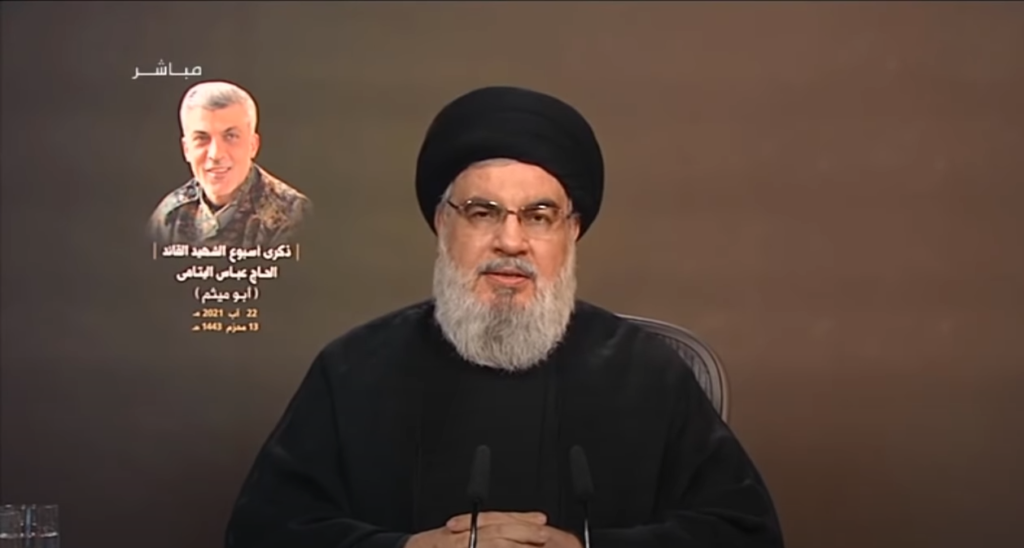
On August 19, Nasrallah attempted to deter Israel from interfering with the shipment, describing it as “Lebanese territory” the moment it set sail – a clear reference to Hezbollah’s equation that views any Israeli strikes on Lebanese territory as a trigger for automatic retaliation. Nasrallah thanked Iran’s Supreme Leader Ayatollah Khamenei and newly installed hardline president, Ebrahim Raisi “for the assistance,” adding that “Iran is a friend that can be trusted.”
Why did Nasrallah feel the need to issue such a warning?
According to international media reports, Iran and Israel have been engaged in an ongoing, mostly covert struggle at sea. In this low-profile conflict, Israel’s objective appears to be aimed at disrupting destabilizing maritime Iranian activity – primarily the illicit transfer of Iranian oil to Syria – as part of a wider Hezbollah terror financing scheme, and the likely transfer of Iranian weapons via ships to the Assad regime and to Hezbollah.
Now, Israel finds itself in an explosive situation as it considers whether or not to allow the Iranian oil ships to dock at Lebanon, and it is likely working hard to see if the ships are carrying any other cargo beyond oil. This juncture, therefore, represents a potential flashpoint, and it is directly tied to Iran’s growing use of the sea as an arena of influence and combat. It should be noted that according to other indications, the Iranian “Hezbollah” fuel ships will dock at the port of Baniyas in Syria and from there the fuel will reach Lebanon by land in tankers (trucks).
The Islamic Republic has been targeting civilian ships with business ties (and in one case, merely former ties) to Israeli businessmen. The attacks are a signal from Iran of its intention to deter Israel from future sea operations against its military naval and trafficking activity. Both sides were conducting attacks with visible caution, and trying to avoid casualties – until Iran’s deadly explosive drone strike on the Mercer oil tanker in the Sea of Oman on July 29 and July 30, which killed a British and a Romanian national.
According to a US Central Command investigation, multiple Iranian-made drones slammed into the ship, with a third suicide drone launched after the first two failed to create significant damage.
That attack represents a serious escalation by the Islamic Revolutionary Guards Corps (IRGC) and its naval campaign. Due to the deaths of crew members from two nations, the attack drew international condemnation, but it remains to be seen whether this will have any long-term dampening effect on Iran’s actions.
Iran did not seem particularly deterred by the condemnation, or of threats – which have since proven baseless – of a military response by the U.S. or Britain, of as three days after the Mercer ship incident, a group of Iranian armed men temporarily hijacked an oil tanker flying the Panama flag, which was sailing off the UAE coast. The hijacking looked like an Iranian ‘bluff call’ regarding threats to take action against it by the international community, as well as being a display of escalation dominance by Tehran at sea.
The installation of Raisi as president by Khamenei, in what is widely regarded as a rigged election, signals a complete takeover of all branches of government – the cabinet, the judiciary, and the parliament – by Khamenei’s hardline camp at the expense of the reformist camp. It could also signal a new and more aggressive phase of regional malign activities.
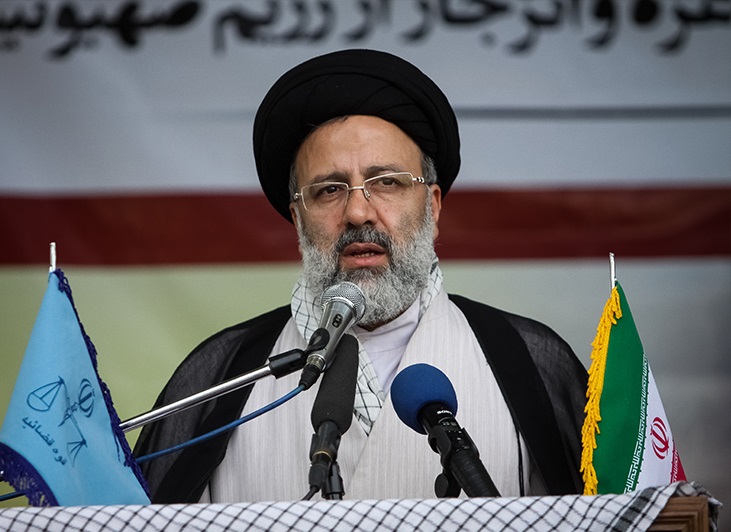
Iran’s activities at sea are not limited to its shadow war with Israel.
In 2019, as it was pushing back against biting U.S. sanctions, Iran targeted oil tankers moving to and from ports belonging to its Sunni Arab Gulf state rivals. In one wave of attacks in 2019, Iranian diver’s stuck limpet mines that blew holes in two Saudi Arabian ships, one Emirati ship, and a Norwegian ship. Iran’s signal at that time appears to have been that if it will not be allowed to export oil, its Gulf rivals will not be able to either.
Meanwhile, the IRGC’s naval branch has harassed American vessels at sea on a regular basis, including in recent months, in a show of defiance with explosive repercussions.
Targeting civilian vessels – an Iranian modus operandi
The shadow sea war that Israel and Iran appear to be engaged in can be assumed to be broader in scope than what is publicly known. Known incidents have occurred across a wide arena – across the Mediterranean Sea, the Red Sea, the Gulf of Oman, the Persian Gulf, and the Indian Ocean.
In one incident on July 3, according to a report by the Hezbollah-affiliated Al-Mayadeen television channel, a ship that was formerly owned by an Israeli company was attacked in the northern Indian Ocean. The ship sustained damage due to a fire and was able to sail to Dubai, where it anchored.
Hebrew media reports in Israel speculated that Iranian intelligence agents had misidentified the ship as being currently Israeli-owned.
“If Iran is indeed responsible, this is a severe mistake, as the ship was recently sold by a company owned by [Israeli businessman] Eyal Ofer, and today it has no connection to Israel,” reported the Yedioth Ahronoth daily on July 4.
The incident is part of a long-standing pattern in which Iran – likely the IRGC Navy’s elite units – appear to use limpet mines, drones, and possibly missiles to sabotage civilian ships owned by Israeli shipping companies.
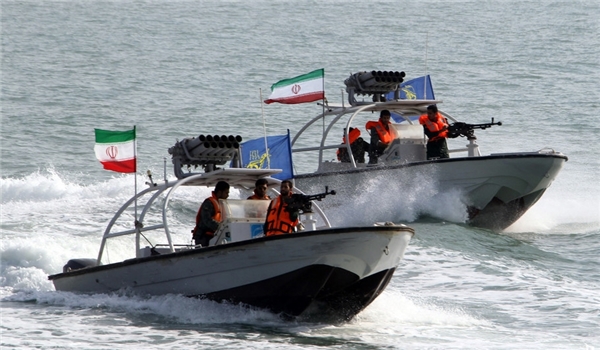
A month earlier, on June 2, dramatic international reports carried news of the sinking of the largest warship in the Iranian Navy [which is a parallel branch to the IRGC’s Navy], after catching fire in the Gulf of Oman, under what the Associated Press described as “unclear circumstances.”
The ship, the “Kharg”, is named after an Iranian island that serves as the country’s main oil terminal. Reuters reported that all of the on-board personnel were able to safely evacuate and that the “Kharg” was on a “training mission.”
Iranian authorities could not have hidden the sinking of such a significant military vessel for long. Some Iranian reports claimed the fire broke out when a boiler exploded.
Yet a revealing interview with a former Iranian officer who served on-board the “Kharg”, published by Radio Free Europe/Radio Liberty, indicated that the chances of an accidental fire were slim.
Hossein Ayran, the former officer, said the Iranian Navy took fire hazards seriously and had assembled specialized firefighting teams for each ship, drilling fire scenarios frequently.
“The “Kharg” had fire pumps – one of which would be working at all times [and] emergency pumps, many [fire] extinguishers [especially in the engine room], a CO2 flooding system, a sprinkler system, flame detectors, and smoke detectors. Also, some 400 safety circuits, each of which is capable of sounding the alarm in the engine room and on the bridge in case of a malfunction,” he said, adding, “I was therefore shocked when I heard that the “Kharg” had sunk.”
The report said that “it is possible that the fire and flooding were due to an act of sabotage or as a result of a hostile action.” It described the ship as a major asset for the Iranian Navy, which was designed to replenish oil supplies to Iran’s fleet at sea, thereby extending their range, but which could also transport weapons. The report said it was also “ideal also for the safe transfer of valuable or politically sensitive assets, such as imported military equipment.”
The incident was noteworthy for the Pentagon’s rapid distancing of itself from the ship’s sinking, which appeared to come via background briefings of Pentagon sources to reporters.
The Pentagon’s decision to publicly signal to Iran that it had nothing to do with the sinking seems to be motivated by a desire to prevent the sea incidents from derailing nuclear talks that the U.S. and other world powers are conducting with Iran in Vienna.
The denial joins others like it in previous incidents of Iranian ships that were targeted for sabotage and can be interpreted to reflect American disapproval of Israel’s alleged role in this maritime shadow war.
In many ways, the sinking of the “Kharg” does not fit into the pattern of past Iranian ships reportedly attacked. According to the report, most of these ships have been Iranian oil tankers, whose oil cargo was headed for ports on the Syrian coastline.
According to a report by Ron Ben Ishay, a military analyst at Ynet, the main objective of Israeli efforts has been, at least since 2019, to disrupt an intricate Iranian oil-for-Hezbollah cash regional scheme.
Although Iran has been smuggling oil to Syria for many years, the May 2018 Caesar Act sanctions, passed by the Trump Administration, as well as EU sanctions on Syria, blocked Iran from receiving cash from the Assad regime for its oil.
As a result, Western intelligence agencies, including those in Israel, began suspecting that in exchange for the continued illegal smuggling of Iranian oil to Syria, the Assad regime has been paying Hezbollah, enabling the Islamic Republic to both sponsor its primary regional proxy, and to launder terror financing money along the way.
The late commander of the overseas elite Iranian Quds Force, Qassem Soleimani, devised three ‘lines of control’ (LoCs) for the smuggling of Iranian arms to Syria and Lebanon – via land, air, and sea.
Now, it appears as if Iran is also making use of its sea smuggling network to fund Hezbollah.
The Iranian tankers reportedly leave the Iranian island of Kharj – which the late Iranian ship was named after, or the Qeshm island, filled with oil. From there, they take a direct route to Syria, sailing via the Hormuz Straits, Bab El-Mandeb, the Red Sea, the Suez Canal, and the Mediterranean Sea, to the Syrian coastline Mediterranean, where they either anchor at sea and transfer their cargo to Syrian tankers, which unloaded the oil onshore, or sailed directly to the Syrian ports of Latakia and Tartus.
By 2019, the Iranians reportedly understood that this route was too exposed, and began following a much longer route that circumvents the whole of Africa. Iranian ships enter the Gibraltar Straits, and only then enter the Mediterranean Sea, heading towards Syria.
The UK’s seizure of an Iranian ship at Gibraltar in July 2019 set off a confrontation with the Islamic Republic, and the ship was only released after the Iranians seized a British-owned tanker in the Persian Gulf in retaliation (and after Iran claimed that its ship would not discharge its cargo in Syria).
It seems possible that this triangle of oil smuggling via the sea, money laundering, and terror financing for Hezbollah has therefore been the prime target of Israeli special naval operations.
The Iranians appear to respond to such incidents by targeting Israeli-owned cargo ships, creating a lengthy tit-for-tat dynamic, with real potential for escalation.
Prominent cases of this include allegations of Israel being behind an attack in March this year on an Iranian container ship in the eastern Mediterranean Sea, named the “Shar e Kord“, causing a fire.
Shortly after that incident, the U.S. moved to distance itself from the incidents, when American officials told The Wall Street Journal that it was Israel that was behind at least 12 attacks on Iranian ships illegally carrying oil to Syria. The sources said Israel was using naval mines to damage the vessels.
Some reports estimated that the value of each Iranian oil tanker, carrying hundreds of thousands of oil barrels, stood at tens of millions of dollars, meaning that the shadow war is as much an economic war as it is a kinetic one.
In February 2021, an oil tanker named The “Emerald” experienced a major oil spill, which contaminated significant sections of the Israeli coastline. Subsequent details released on the ship by Israeli authorities show that it fits very well into the Iranian oil-for-Hezbollah financing pattern. The “Emerald” loaded up its crude oil at Kharg Island, and after it spilled quantities of its cargo, it continued on to the Syrian coastline, where a Syrian tanker transferred the remainder of the oil.
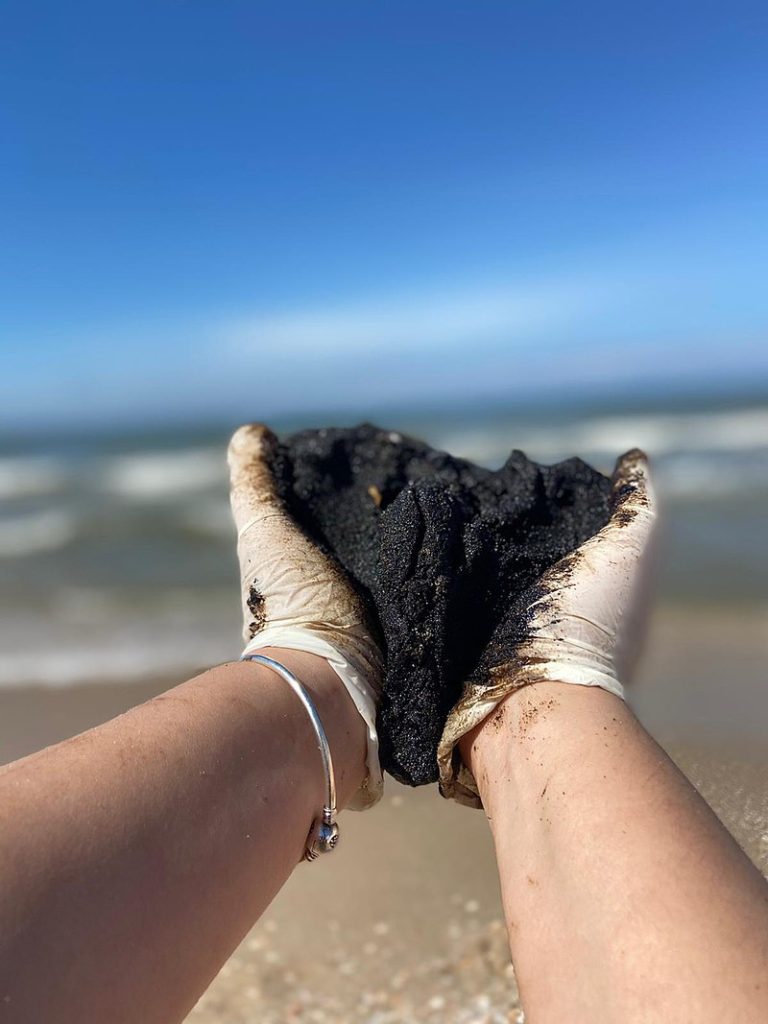
The sea campaign as part of the wider war between wars
A month earlier, in February 2021, Iran reportedly conducted an explosive attack on an Israeli-owned cargo ship, the “MV Helios Ray”, in the Gulf of Oman.
According to a report in Israel Hayom, Israel responded to the attack on the “MV Helios” with airstrikes on Iranian targets in Damascus.
Another key development in this campaign is the attack on the Iranian “MV Saviz” in the Red Sea, in April 2021. The ship maintained a static presence in the area, and while the Iranian Foreign Ministry claimed it was a “commercial” vessel, multiple media reports described it as an IRGC command ship, able to gather intelligence, and act as a mother ship for Iranian paramilitaries active in the area. The ship’s presence in the sensitive Red Sea had been sharply criticized by Saudi Arabia.
Riyadh’s position on the “Saviz’s” threatening position is an illustration of a clear alignment of Israeli – Saudi interests to secure international sea lanes and civilian traffic from the threat posed by Iran and its armed proxies.
The interest is also shared by Israel’s Abraham Accord partners, the UAE and Bahrain, creating fertile ground for potential intelligence-sharing on Iran’s activities at sea.
The fact that an Israeli-owned cargo ship was attacked near the United Arab Emirates in international waters, likely by a drone or by a missile, in April 2021, only serves to reinforce this commonality of interests.
However, the sea campaign takes on new relevance in light of the intent by the Iranian axis to exploit the collapse of the Lebanese economy to offer a desperate Lebanon Iranian oil and gas ship deliveries to Lebanon. Such shipments would not only allow Iran and its Hezbollah proxy to deepen their hegemony in Lebanon but could also create a new pathway for the trafficking of arms. Israel’s defense establishment and government must now formulate a new policy to respond to these shipments.
Some of Israel’s decision-making could be guided by the intelligence of what is on-board the ships. Should weapons be detected, Israel would have little choice but to intervene. If the ships carry ‘only’ oil, that too will be highly problematic in terms of furthering Iranian control of Lebanon.
Following Nasrallah’s ‘equation,’ which he extended to Iranian oil tankers traveling to Lebanon, intervention could lead to escalation, but a failure to intervene could create significant new threats to Israeli security. The question of what is precisely on-board Iran’s ships heading for Beirut may be key in determining how Israel will respond.
Yaakov Lappin is an Israeli-based military affairs correspondent, analyst, and research associate at the Alma Center. He is an associate researcher for the Begin-Sadat Center for Strategic Studies, and an in-house analyst for the Miryam Institute. He provides coverage and analysis for a number of media outlets, including JNS.org and Janes Defense Weekly.

